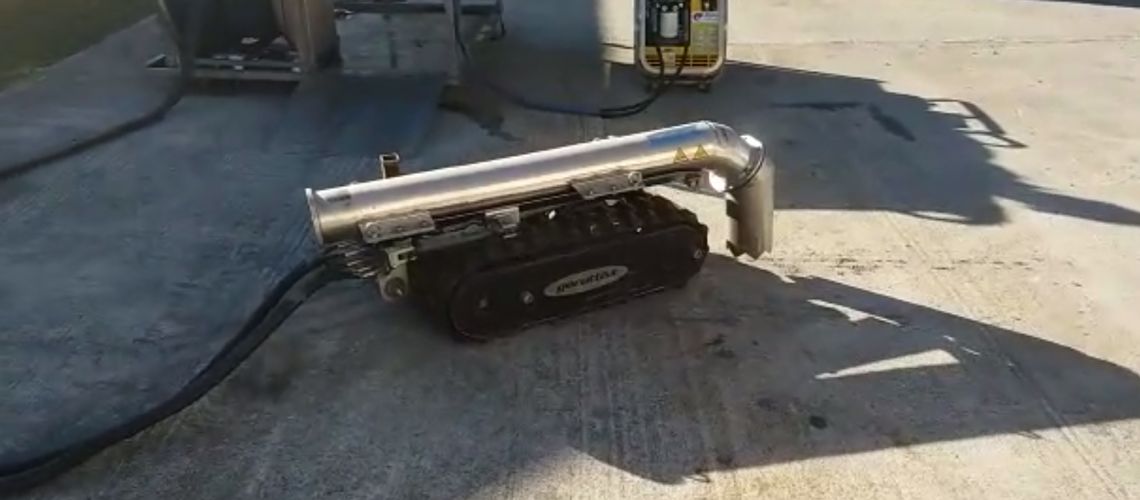Every year Enva manages the sludge generated from the treatment of over a billion litres of water and provides a range of services including transport, processing, treatment and recovery.
Traditionally, cleaning undertaken at wastewater treatment plants has required tanks and other processing areas to be emptied and kept out of commission whilst work took place. As a result, it is often necessary to close the whole site and divert material to alternative treatment facilities. Even when arrangements can be made to keep the plant operational the likelihood is that treatment capacity will be in some way constrained.
The project
Enva was recently commissioned by Kerry County Council to clean aeration ditches at two wastewater treatment facilities in Ireland. Each tank had a tank bottom surface area of approximately 750m2 and a liquid depth of around 2m. As neither location had the infrastructure required to reroute material onsite, employing traditional cleaning methods would have resulted in both plants needing to close and waste needing to be transported to an alternative location.
What we did
Traditional maintenance methods require aeration ditches and tanks to be fully drained prior to work commencing. A combination of manual and mechanical cleaning is then employed to remove the build-up of unwanted material, which can impact the operational efficiency of the plant. This would generally involve operatives entering the area with scrapers and also potentially the use of a mechanical loader machine pushing material into a vacuum hose.
In order to ensure that the customer could keep both sites fully operational Enva employed a new technique which involved deploying a remote operated underwater vehicle (ROV) equipped with a suction hose connected to a vacuum unit.
This technique, which generally required only two operatives on site at any one time, allowed the tank bottom contents to be removed and processed without any change to normal working conditions. The material pumped from the aeration tank floor was first run through a vibrating screen to remove the heavier solids and rags. It was then passed through a hydro-cyclone pump and a second vibrating bed screen in order to separate out the finer solids and grit.
Due to the lack of visibility during the work the ROV worked to a predefined matrix programme to ensure that the whole surface area was methodically covered and as much material as possible was removed.
Benefits
The ROV cleaning technique realised a number of benefits for Kerry County Council. The project was completed in approximately the same length of time as it would have been using traditional methods. Vitally however no plant was taken out of commission. This meant that the costs and logistics planning associated with tankering material to alternative sites could be avoided.
The use of the ROV and screening technique also significantly reduced the amount of plant, equipment and labour required for the project again helping to reduce the associated costs.
Importantly the remote ROV approach also greatly reduces the need for human interaction with waste materials and eliminates the need for operatives to work in confined spaces where the atmosphere is potentially hazardous and full breathing apparatus is often required.
Avoiding the need to drain the aeration ditch also meant that there was less likelihood that its microbial activity would be impacted. This was monitored constantly by plant operators measuring the liquid dissolved oxygen (DO) content. Throughout out both projects no significant reduction in aeration activity was recorded.
The future
Going forward Enva expects this less invasive technique to become increasingly available enabling more customers to benefit from the commercial and health and safety benefits it presents.
Work is currently being undertaken to evaluate the investment in robotic devices together with the development of training programmes for Enva’s highly skilled and experienced operations teams.
In order to further improve the environmental performance of future maintenance projects the company is also working on recovery solutions for classified and screened waste created by the tank cleaning procudures.
For more information on Enva’s services please visit www.enva.com.

